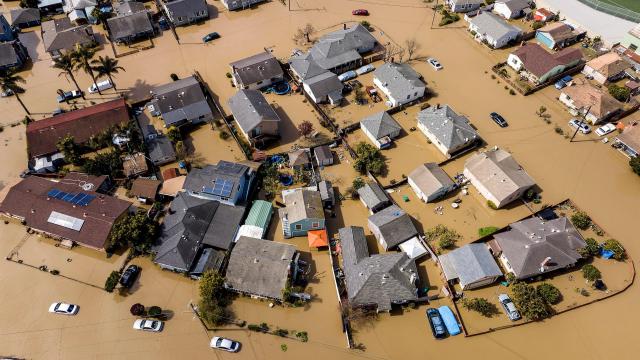As climate change makes extreme weather more likely, and more unpredictable, meteorologists and government agencies need new tools to keep up. Two studies published this week in the scientific journal Nature suggest that artificial intelligence can be used to support accurate and faster forecasting and extreme weather warnings.
One study outlines how Huawei’s AI model, Pangu-Weather, has been used to forecast weekly weather patterns around the world. The new tech is able to do so quicker than traditional weather forecasting methods but with slightly lower accuracy. The network was trained on 39 years of global data from 1979 to 2017, combining historical weather information with modern weather forecasting models. Researchers also studied 69 factors including surface variables and upper atmospheric weather variables, the study explained.
Pangu-Weather has led to promising results in some scenarios in weather forecasting. It predicted the early path of a tropical cyclone in the Pacific more accurately than other forecasting models, the study found. The machine learning model was more accurate when analysing cyclones than other current weather forecasting models.
Currently, weather forecasting utilises the numerical weather prediction (NWP) method. NWP computer models forecast future weather by analysing contemporary weather patterns. “[It] represents atmospheric states as discretized grids and numerically solves partial differential equations that describe the transition between those states. However, this procedure is computationally expensive,” the study authors wrote.
Many of the current models and methods analyse different weather-related conditions like wind, pressure, and humidity one by one, MIT Technology Review reported. This makes predictions take longer to process. Pangu-Weather researchers envision using the new tech alongside current forecasting models to ensure that the forecasts are accurate. “Our ultimate goal is to build next-generation weather forecasting framework using AI technologies to strengthen the existing forecasting systems,” Tian Qi, a chief scientist of AI at HUAWEI, said in a statement.
The second study published in Nature this week outlined how a deep-learning model predicted extreme rainfall more accurately and quicker than other leading forecast methods. The forecasting model, NowcastNet, prediction came in first about 71% of the time when tested against similar forecast systems, the study explained.
Study authors emphasised that Nowcasting can be used as a risk prevention tool and for crisis management, especially as research shows that climate change has increased heavy rainfall. The National Oceanic and Atmospheric Administration has estimated that 2022’s natural disasters cost the United States more than $US160 ($222) billion. Planning for and forecasting these events could potentially save lives and allow agencies to allocate funding for emergency preparedness.
Researchers said that the tool’s accuracy could support those efforts. During testing, NowcastNet predicted rainfall up to three hours beforehand, making it an especially important tool for extreme weather prediction. Other widely used models, like DeepMind’s DGMR, can predict the likelihood of heavy precipitation 90 minutes beforehand.
“The forecasts made by NowcastNet are judged by expert meteorologists to be more accurate and instructive than pySTEPS, DGMR or other deep-learning systems,” the study authors wrote.
We’re currently in the early stages of developing and deploying machine learning to accurately predict incoming extreme weather. But it’s hard to predict how the continued development of these AI tools will affect forecasting. Current weather prediction models have been challenged by climate change, and there’s no reason to say that AI models won’t struggle with global weather shifts as well.
